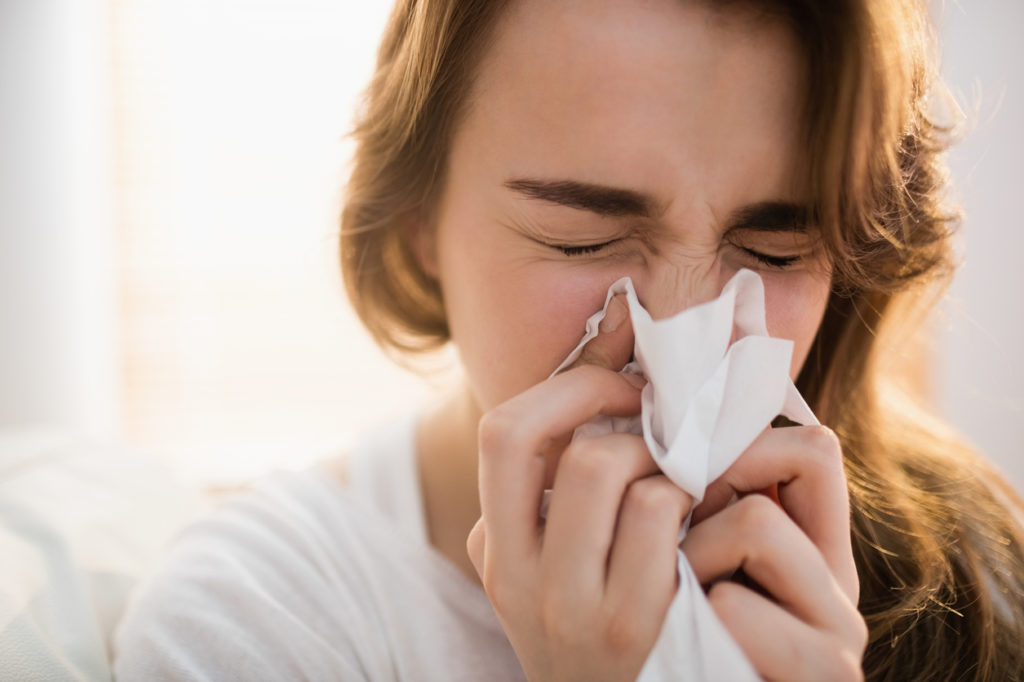Products are selected by our editors, we may earn commission from links on this page.
There’s a lot to get excited about when you feel that first chill in the air. ‘Tis the season for apple cider donuts, pumpkin carving, chunky sweaters, and reintroducing your favorite boots back into your wardrobe. But unfortunately, there’s a downside to the fall/winter season: the flu is likely to strike your community in the coming months. Well, sorta. Here’s when to be on flu alert and how to keep yourself and others flu-free.
According to the Centers for Disease Control and Prevention (CDC), which has been collecting flu-related data since the early ’80s, February is the “peak month of flu activity.”
The CDC reports that February is the month with the “highest percentage of respiratory specimens testing positive for influenza virus infection during that influenza season.”
But, the CDC states, in the 36-year period during which data was collected, flu diagnoses also spiked in December, January, and March. Basically, one must stay vigilant of flu symptoms throughout the entire winter season.
Although influenza viruses can make the rounds during any season, they are most commonly contracted during the colder months. This is most likely because we retreat indoors to escape bad weather, and sickness thrives when we congregate in confined spaces.
[fm_giphy url=”https://media.giphy.com/media/kbHgQmsElFv20/giphy.gif”]
The best way to prevent getting the flu is to receive your annual flu vaccine, which can protect you from three out of four common flu strains (H3N2, H1N1 and a B virus).
You may still contract the flu after receiving a flu shot. But research shows that symptoms in those who received the vaccine are milder and less likely to lead to hospilization than in those who didn’t.
[fm_giphy url=”https://media.giphy.com/media/gAGrxGQUtVN4Y/giphy.gif”]
In addition to receiving a vaccine, proper and frequent hand-washing is key to thwarting illness. If you’re already infected, stay away from others while sick and cover your nose and mouth when coughing or sneezing. The CDC reports that the flu is spread by “droplets” expelled when coughing, sneezing, or even talking.
Those infected with the flu are contagious for three to four days after the illness begins, and some can even infect others one day before their own sickness sets in. Even if you’re feeling the least bit off, take preventative actions to keep those around you safe.
[fm_giphy url=”https://media.giphy.com/media/l0MYFN4xNCJq6Pm7K/giphy.gif”]
If you or a loved one begin experiencing flu-like symptoms (chills, body aches, fever, cough, sore throat, and fatigue) contact your doctor and begin prescribed flu treatment ASAP.
Knowing when flu season is at its peak can help us stay alert and do our best to prevent the flu from spreading. Come December, January, February, and March, let’s keep hand sanitizer, tissues, and disinfectant at the ready to stop the flu in its tracks.





